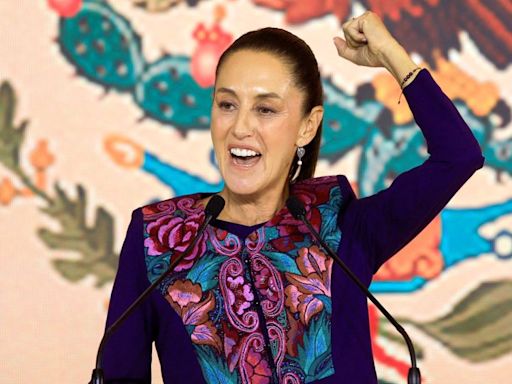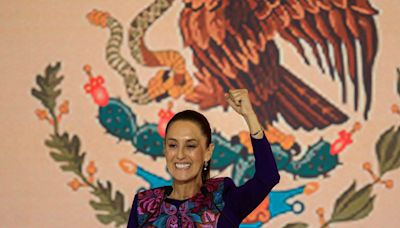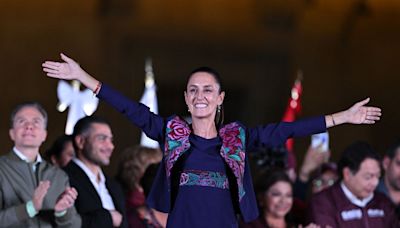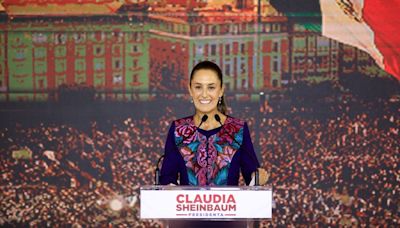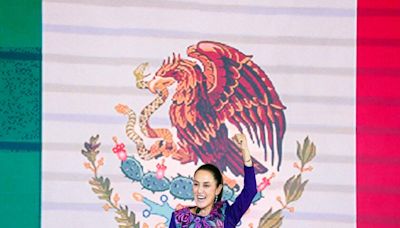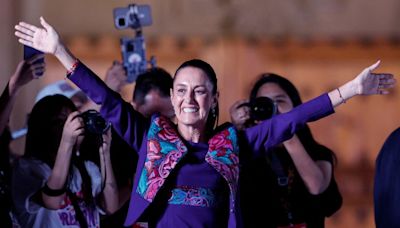Search results
People also ask
Why is Mexico City a leading city in the developing world?
What is Mexico City known for?
Is Mexico City a good place to live?
Why should you visit Mexico City?
Aug 4, 2023 · By Kayla Hui. |. Reviewed by Ann Henson. |. Last updated on Aug. 4, 2023. Mexico City, officially known as Ciudad de México (CDMX), is a growing and vibrant metropolis nestled in the heart of...
- Museo Frida Kahlo
One of the best-known museums in Mexico City exhibits the...
- When To Visit
Mexico City's coldest months still offer daytime highs in...
- Templo Mayor
Templo Mayor is ranked #7 out of 16 things to do in Mexico...
- Museo Frida Kahlo
- Mexico City’s Teotihuacan. Teotihuacan is the City of pyramids, and you can admire the ones dedicated to the sun and moon. In the Nahuatl language, Teotihuacan means City of the gods.
- Inbursa Aquarium. The Inbursa Aquarium is the only one of its kind in Mexico City, housing more than 14,000 species of fauna. This aquarium is perfect for children because it’s interactive and has an area to touch some of the animals, especially dolphins.
- Lake Xochimilco. Xochimilco is like a small Venice where you can navigate its romantic canals amidst beautiful vegetation. It’s an environment consisting of a network of water canals navigated by charming, colorful boats (called trajineras).
- The Chapultepec Castle. The Chapultepec Castle was built between 1785 and 1787 by orders of Viceroy Bernardo de Gálvez as a rest house in the woods of the same name (Bosques de Chapultepec).
- Zócalo: The Birthplace of The Constitution
- The National Museum of Anthropology
- Templo Mayor and The Great Pyramid of Tenochtitlán
- The Palace of Fine Arts
- Mexico City Metropolitan Cathedral
- The National Palace
- Chapultepec Park
- Paseo de La Reforma and The Angel of Independence
- National History Museum
- Coyoacán & The Frida Kahlo Museum
The beating heart of Mexico City is Zócalo — the Plaza de la Constitución (Constitution Square) — where the country's first constitution was proclaimed in 1813. Measuring some 240 meters in each direction, it's one of the world's largest squares and was laid out almost immediately after the conquest of the former Aztec city of Tenochtitlán on which...
One of the most important of its kind in the world, the National Museum of Anthropology lies in Chapultepec Parkand is hard to miss due to the huge monolithic figure marking its entrance. Built in 1964, this strikingly successful example of contemporary architecture is famous for its magnificent displays of old Indian art treasures, most notably in...
Despite the widespread destruction after the defeat of the Aztecs, a number of their important historic sites have been unearthed and put on display in recent years. The most important site is Templo Mayor, home to the remains of the Great Temple of Tenochtitlán, including the first relic discovered in 1978, a finely sculpted round disc more than t...
One of Mexico City's most important cultural landmarks, the Palace of Fine Arts(Palacio de Bellas Artes) is an architectural gem. Towering over the adjacent park, this massive marble building — designed by Italian architect Adamo Boari with Art Nouveau and Art Deco influences — was completed in 1934 and is so heavy that it has sunk more than four m...
Dominating Zócalo Square, the massive Mexico City Metropolitan Cathedral(Catedral Metropolitana de la Asunción de María) is one of the oldest and largest churches in the Western Hemisphere. Built atop part of the old Aztec temple precinct, construction of this massive basalt and grey sandstone structure began in 1525 and extended over 250 years. In...
Occupying the east side of Mexico City's main square, Zócalo, the immense National Palace (Palacio Nacional), built of reddish tezontle stone and boasting a 200-meter-long façade, is the official residence of the president. Built on top of an Aztec palace, it was the seat of the Spanish viceroys during the colonial period and has been much altered ...
Bosque de Chapultepecis Mexico City's principal park, and covering an area of more than four square kilometers, it is also its largest. Once a stronghold of the Toltecs, it was here in AD 1200 that the Aztecs settled, and according to legend, laid out a park in the early 15th century. Over time, the hill became a summer residence of the Aztec ruler...
The principal east-west traffic artery of Mexico City, Paseo de la Reforma extends for 15 kilometers from Tlatelolco to the residential district of Las Lomas but is best known for the stretch from Avenida Benito Juárez to Chapultepec Park. Here, this attractive boulevard widens to 60 meters with a pleasant green strip in the middle containing busts...
Another of Mexico City's world-class attractions is the National History Museum(Museo Nacional de Historia). Housed in the 18th-century Chapultepec Castle (Castillo de Chapultepec), on a site once occupied by Aztec buildings and later by a Spanish hermitage, the museum opened in 1944 and is home to an impressive collection of pre-Columbian material...
Laced with atmospheric cobblestone streets, Coyoacán is one of Mexico City's oldest neighborhoods. Take time to stroll around the maze of laneways here and explore the hidden plazas, colonial-style mansions, and art-filled old churches like San Juan Bautista. You can also sample exotic fruits and vegetables at the markets. One of the top tourist at...
Mexico City (Spanish: Ciudad de México, [b] [10] locally [sjuˈða (ð) ðe ˈmexiko] ⓘ; abbr.: CDMX; Central Nahuatl: Mexihco Hueyaltepetl, [11] Nahuatl pronunciation: [meːˈʃiʔko wejaːlˈtepeːt͡ɬ]; [12] Otomi: 'Monda) is the capital and largest city of Mexico, and the most populous city in North America.
- Centro Histórico: City of Palaces. The Aztecs built their empire on Lake Texcoco in the Valley of Mexico—a great island city connected by canals and protected by fortresses.
- Xochimilco: Where the Flowers Grow. In the south of Mexico City, a network of canals weaves through a series of man-made islands in Xochimilco, the so-called “Venice of the New World.”
- Teotihuacan: City of the Gods. Mexico boasts more UNESCO World Heritage sites than any other country in the Americas, like the ancient archaeological site of Teotihuacan, located 45 minutes northeast of Mexico City.
- Art: Mesoamerica to Modern Mexico. Mexico City has more than 150 museums and galleries. The Soumaya Museum was designed by the Mexican architect Fernando Romero and is one of the most visited in Mexico City.
Mar 4, 2024 · INQUIRE. What's in this article? ⬇️ show. From important landmarks to historical sites, these are the best places to visit in Mexico City with location, how to get there, and golden tips for each Mexico City attraction. 1. Zocalo: best of the best places to visit in Mexico City.
1 day ago · Mexico City, city and capital of Mexico, synonymous with the Federal District, although the term can also apply to the city’s metropolitan area to the west, north, and east. It was built atop the razed island-capital of Tenochtitlan, the cultural and political center of the Aztec (Mexica) empire.
